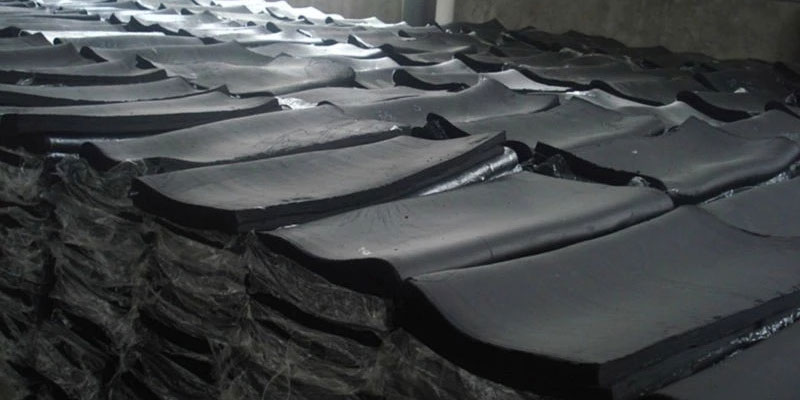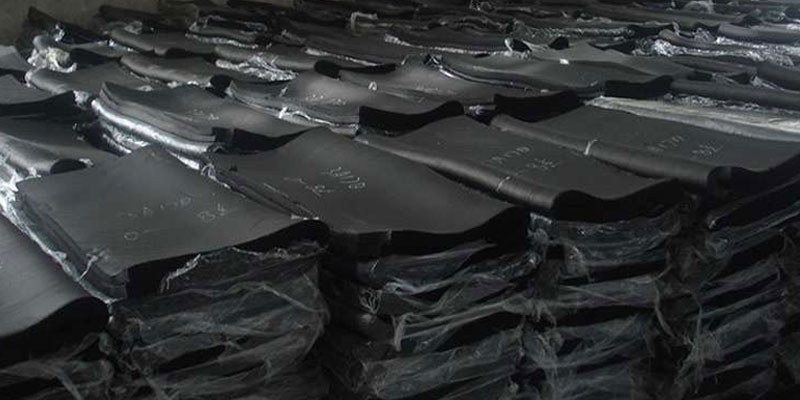Reclaimed Rubber
Reclaimed rubber is the rubber recovered from de-vulcanization of a used tire rubber. They are exploited as a replacement virgin rubber.
Due to the environmental problems as a results of industrial waste, recent studies appear to have focused more into reclaimed rubber and recycling thereof, which is dominated by worn tires and the rubber recovered from de-vulcanization of a wasted rubber.
Production of Reclaimed Rubber:
The main supply of reclaimed rubber is used rubber products such as rubber hoses; belts; shoes and tires. End-of-life-tires make the largest contribution to the amount of rubber waste. They usually constitute of two or more polymers, including natural and synthetic rubbers, additives and plasticizers. These tires can be ground at temperatures below the glass transition temperature of all the polymers in the material to form Ground Tire Rubber (GTR). This process reduces the dimensions of the rubber matrix particles. GTR with dimensions less than 2mm can be reused as filler in other applications. Due to incompatibility, it is also not possible to incorporate GTR in virgin rubber because of the sulphur crosslink network. However compatibility can be improved by reclamation process.
Reclaiming is a process where vulcanized rubber is pressurized to devulcanized using thermal, chemical and mechanical techniques to break the vulcanized structure.
In most cases, reclaimed rubber has the plasticity practically equivalent to a virgin rubber, but has a reduced molecular weight and mechanical properties compared to virgin rubber. This appeared as a breakthrough in improving the effective use of reclaimed rubber as an additive for virgin rubber, which in turn would save expenses as well as preservation of natural resources and the environment.
Different types of reclaim exist in the market and good quality of reclaim permits relatively higher quantities of reclaimed rubber to be incorporated into new rubber with little compromise in properties. Quality of reclaimed rubber was affected by the type of curing system and vulcanizing conditions which influenced cross linking density and consequently affecting thermal and mechanical properties. In the case of mechano-chemical reclaiming, shear force applied on the rubber particles influenced the degree of reclaiming . During the reclaiming process, not all crosslinks were destroyed in the rubber material. This resulted to high crosslink density after re-vulcanization of the reclaim. Because of the high cross linking in reclaimed rubber, molecules were tightly bound and did not have enough freedom to entangle and interact with matrix, leading to poor interfacial adhesion. Therefore waste rubber seemed to favour treatment with coupling agents before mixing in order to promote good compatibility. It may be concluded that composition and processing of waste rubber influenced the overall properties of the composites. Generally mechanical properties like modulus; tear strength; tensile strength; storage modulus and others were by concentrations of reclaimed rubber in virgin rubber. Antioxidants were normally required in rubber formulations to protect rubber materials from thermo-oxidation and guard it against aging of the vulcanized material.
Reclaimed Rubber Uses:
Reclaimed rubber is normally used for extending virgin rubber compounds; cost reduction of rubber compounds and minimizing virgin rubber elastomer requirements. Some example include adhesives, automotive floor mats, mechanical goods and tread of passenger car, light truck and off-road tires.
Different grades of reclaimed rubber available at Intercity Enterprises:
- Reclaimed Rubber Super fine
- Reclaimed Rubber Medium


